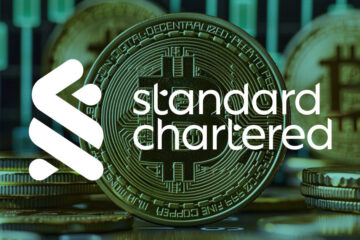
The following is a guest post by Nischal Shetty, co-founder and President at Shardeum.Mt. Gox’s dormancy might not be over, but a series of tokens moving out from its wallets has caught the attention of the market. A total of 137,890 BTC valued at $9.4 billion is presumed to be headed to creditors’ wallets, and this has warranted a mixed set of responses from experts, most of whom are concerned about a potential increase in selling pressure and a subsequent drop in Bitcoin’s price. Mt. Gox was once the world’s leading Bitcoin exchange before it was hacked in 2014, leading to the loss of over 850,000 BTC. After years of legal battles, Japanese authorities finally approved a rehabilitation plan in 2021, launching a legal procedure known as “civil rehabilitation,” allowing creditors to recover some portion of their lost funds.The plan has become effective as creditors who lost their funds are now allocated a part of the remaining ones. Mt. Gox’s planned repayments to creditors might have played some role in a 4% decline in Bitcoin’s price over the past 24 hours, which the market was able to shake off with an eventual rebound. However, there is a concern that these newly freed coins will flood the market, leading to a selloff and driving the price down further.In an official statement, Mark Karpeles, former CEO of Mt. Gox, confirmed that while Bitcoin sell-offs aren’t happening now, tokens being moved from Mt.Gox to a new wallet is part of the larger plan to distribute to creditors. Understanding Long-Term Holders (LTHs) and Short-Term Holders (STHs)The Bitcoin market can be broadly divided into two categories based on investor holding times: Long-Term Holders (LTHs) and Short-Term Holders (STHs).LTHs: These investors have held onto their Bitcoin for over 155 days. They are generally considered more resolute and less likely to panic sell during market downturns.STHs: These investors have bought Bitcoin within the past 155 days. They are typically more reactive to market news and events and might be quicker to sell in response to negative sentiment.Historical LTH Selloff vs. Mt. Gox RepaymentsCryptoSlate Senior Analyst James Van Straten shares a perspective that sheds light on the potential of the Mt. Gox repayment event on the market. He shared on his X account how Grayscale Bitcoin Trust and Long Term Holders sold around 1M BTC in the last five months.The market has been able to showcase impeccable resilience in absorbing these sell-offs. In comparison, Mt. Gox’s repayments to its creditors would be 1/10th of the 1M BTC sold.The recent Bitcoin rally, which reached an all-time high this year before the halving, was strong enough to incentivize some Long-Time Holders to sell, as indicated by a decrease in their total supply. Van Straten argues that this recent LTH selloff would dwarf the amount of Bitcoin released through Mt. Gox repayments.Data and Market AnalysisAccording to on-chain data, research firm Glassnode released earlier this year that the number of Bitcoin addresses holding onto coins for more than 5 years reached a new low, suggesting some long-term investors were taking profits. The massive BTC movement has raised concerns that Mt. Gox creditors might decide to sell their recovered coins on exchanges, flooding the market and driving down prices.This fear is amplified by the fact that the average daily inflow of Bitcoin to exchanges has been hovering around 2016 levels, suggesting potentially lower liquidity to absorb a large sell-off.But compared to this larger LTH selloff, the impact of Mt. Gox repayments might be less impactful for the market. It’s important to remember that not all creditors who receive their BTCs will immediately sell their recovered Bitcoin. And the distribution hasn’t come into effect formally as yet.Among the creditors, some might choose to hold, or buy more, based on their individual investment strategies. While the immediate market reaction might be negative due to short-term investor jitters, the long-term impact of Mt. Gox repayments could be positive. Increased institutional adoption often follows periods of market consolidation, and resolving the Mt. Gox saga could improve investor confidence in the overall health of the Bitcoin ecosystem.ConclusionThe Mt.Gox saga and its potential impact on Bitcoin price highlight some loopholes better addressed at this crucial point of market maturity.While short-term volatility is to be expected, especially when large amounts of coins are moved, market stability and an increase in liquidity could boost investor confidence and set a secure tone for the long-term implications of Bitcoin’s performance. Mentioned in this article
Source link
 Bitcoin (BTC) $ 88,171.00
Bitcoin (BTC) $ 88,171.00 Ethereum (ETH) $ 2,987.35
Ethereum (ETH) $ 2,987.35 Tether (USDT) $ 0.999579
Tether (USDT) $ 0.999579 XRP (XRP) $ 1.94
XRP (XRP) $ 1.94![]() BNB (BNB) $ 852.47
BNB (BNB) $ 852.47 USDC (USDC) $ 0.999837
USDC (USDC) $ 0.999837 Solana (SOL) $ 126.10
Solana (SOL) $ 126.10 TRON (TRX) $ 0.279338
TRON (TRX) $ 0.279338 Lido Staked Ether (STETH) $ 2,985.68
Lido Staked Ether (STETH) $ 2,985.68 Dogecoin (DOGE) $ 0.131701
Dogecoin (DOGE) $ 0.131701 Figure Heloc (FIGR_HELOC) $ 1.04
Figure Heloc (FIGR_HELOC) $ 1.04 Cardano (ADA) $ 0.376680
Cardano (ADA) $ 0.376680 WhiteBIT Coin (WBT) $ 57.69
WhiteBIT Coin (WBT) $ 57.69 Bitcoin Cash (BCH) $ 592.48
Bitcoin Cash (BCH) $ 592.48 Wrapped stETH (WSTETH) $ 3,649.16
Wrapped stETH (WSTETH) $ 3,649.16 Wrapped Bitcoin (WBTC) $ 87,889.00
Wrapped Bitcoin (WBTC) $ 87,889.00![]() Wrapped Beacon ETH (WBETH) $ 3,246.64
Wrapped Beacon ETH (WBETH) $ 3,246.64 USDS (USDS) $ 0.999831
USDS (USDS) $ 0.999831 Wrapped eETH (WEETH) $ 3,237.08
Wrapped eETH (WEETH) $ 3,237.08 Binance Bridged USDT (BNB Smart Chain) (BSC-USD) $ 0.999611
Binance Bridged USDT (BNB Smart Chain) (BSC-USD) $ 0.999611 Chainlink (LINK) $ 12.64
Chainlink (LINK) $ 12.64 Monero (XMR) $ 454.18
Monero (XMR) $ 454.18 LEO Token (LEO) $ 8.27
LEO Token (LEO) $ 8.27 WETH (WETH) $ 2,986.27
WETH (WETH) $ 2,986.27 Zcash (ZEC) $ 447.63
Zcash (ZEC) $ 447.63 Stellar (XLM) $ 0.219017
Stellar (XLM) $ 0.219017 Hyperliquid (HYPE) $ 24.79
Hyperliquid (HYPE) $ 24.79 Coinbase Wrapped BTC (CBBTC) $ 88,123.00
Coinbase Wrapped BTC (CBBTC) $ 88,123.00 Ethena USDe (USDE) $ 0.998854
Ethena USDe (USDE) $ 0.998854 Litecoin (LTC) $ 77.05
Litecoin (LTC) $ 77.05 Sui (SUI) $ 1.47
Sui (SUI) $ 1.47 Avalanche (AVAX) $ 12.27
Avalanche (AVAX) $ 12.27 Hedera (HBAR) $ 0.112724
Hedera (HBAR) $ 0.112724 sUSDS (SUSDS) $ 1.08
sUSDS (SUSDS) $ 1.08 Shiba Inu (SHIB) $ 0.000007
Shiba Inu (SHIB) $ 0.000007 USDT0 (USDT0) $ 0.999529
USDT0 (USDT0) $ 0.999529 Dai (DAI) $ 0.999319
Dai (DAI) $ 0.999319 PayPal USD (PYUSD) $ 0.999918
PayPal USD (PYUSD) $ 0.999918 Cronos (CRO) $ 0.096799
Cronos (CRO) $ 0.096799 Mantle (MNT) $ 1.14
Mantle (MNT) $ 1.14 World Liberty Financial (WLFI) $ 0.134932
World Liberty Financial (WLFI) $ 0.134932 Toncoin (TON) $ 1.49
Toncoin (TON) $ 1.49 Canton (CC) $ 0.101782
Canton (CC) $ 0.101782 Uniswap (UNI) $ 5.75
Uniswap (UNI) $ 5.75 Ethena Staked USDe (SUSDE) $ 1.21
Ethena Staked USDe (SUSDE) $ 1.21 Polkadot (DOT) $ 1.85
Polkadot (DOT) $ 1.85 Aave (AAVE) $ 181.35
Aave (AAVE) $ 181.35 USD1 (USD1) $ 0.998955
USD1 (USD1) $ 0.998955 Rain (RAIN) $ 0.007655
Rain (RAIN) $ 0.007655 Bitget Token (BGB) $ 3.47
Bitget Token (BGB) $ 3.47



